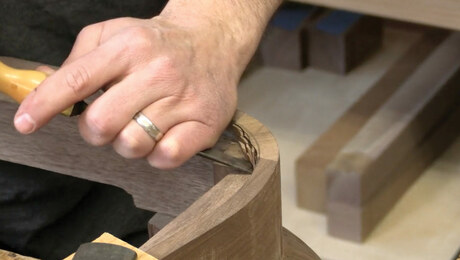
Synopsis: Bracket feet have held up furniture for more than 300 years. Like most enduring elements, they have weathered changes in style but never went out of fashion. Whether you are shaping straight, ogee, or French bracket feet, all you need is a bandsaw.
Bracket feet have held up furniture for more than 300 years. Like most enduring elements, they have weathered changes in style but never went out of fashion. Simple, straight bracket feet date to the Queen Anne Period. Eventually they became more sophisticated and evolved into a graceful ogee (late Queen Anne), many variations of which exist. As rendered in some Chippendale and Federal work, they are slimmed down and called French feet.
I made my first set of ogee bracket feet about 15 years ago for a little New England-style blanket chest. I wasn’t quite sure how to start, so I did some research that suggested I get an antique molding plane to shape the ogee. But finding such a plane in working order involved time and a bit of luck.
My jig consists of a plywood base and a post screwed to it. That’s it. With a bracket-foot blank mounted on the jig, and the profile penciled in on one face of the stock, I can cut any shape, from any period, without the need of expensive shaper cutters or rare molding planes. Poor boys have poor ways.
STRAIGHT BRACKET FOOT Only the inside edge is profiled. The outside edge is plumb. Straight bracket feet were common on Queen Anne furniture made between 1720 and 1780.
OGEE BRACKET FOOT Curves grace both the inside and outside edges. Ogee feet were seen on late Queen Anne furniture made between 1740 and 1775.
FRENCH FOOT Also called a splay foot, this foot has a clean sweep that gives it a modern appearance. French feet were common on Chippendale and Federal furniture made between 1780 and 1810.
For the full article, download the PDF below:
Fine Woodworking Recommended Products

Ridgid EB4424 Oscillating Spindle/Belt Sander























Log in or create an account to post a comment.
Sign up Log in